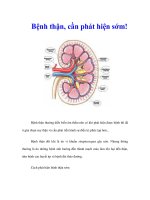Tài liệu More than subject-specific skills for students pdf
Bạn đang xem bản rút gọn của tài liệu. Xem và tải ngay bản đầy đủ của tài liệu tại đây (128.72 KB, 6 trang )
More than subject-specific skills for students
Lorna Uden
FCET
Staffordshire University
The Octagon,
Becaonside,
Stafford, ST 18 0AD. UK.
Tel :+44 1785 353276
Fax: +44 1785 353497
Email:
Gary Moran
Systems Development Manager
Redstone Managed Solutions,
Griffin Hse,
18-19 Ludgate Hill,
Birmingham B3 1DW.
Phone: 08707 201 319
Fax: 0845 2010 271
Email:
ABSTRACT
The ability to transfer and apply knowledge and skills
learned at university into the workplace is becoming more
and more important. It is “graduate attributes” that has
been perceived to be the variable that determined a
graduate’s success in the workplace, rather than their
specific degree. Many universities are now deliberately
emphasizing this to their students.
Work placement offers students the opportunity to apply
the generic skills learned in the classroom to an actual
work situation. During work placement, students can be
provided with the right environment to employ both their
discipline-specific knowledge and their generic skills and
personal attributes in a context closer to that which they
will encounter after graduation.
Work or industrial placement offers many benefits to
different stakeholders: higher education, employers and
students. Despite these, it is often difficult to ascertain
what are the skills that employers want from students,
especially in computing or engineering courses. There are
many criticisms levelled at Higher Education that we are
not providing the necessary skills to equip students for
their future employment.
This paper considers the implications of work placement
from the perspective of a visiting tutor and the employer. It
aims to examine whether competences acquired by
students at universities in their academic work are those
which employers most look for in selecting graduate
recruits. Although subject specific skills are important,
there are also generic skills that employers demand. The
paper describes how these skills have been acquired by
students at Staffordshire University through problem based
learning and how these skills can be taught to employees
in companies so as to provide them with the necessary
skills to promote competitiveness.
1. INTRODUCTION
We are living in a rapidly changing society. To remain
competitive, business needs to respond to dynamic market
demands. The skills learned today will be obsolete in a few
years. Gone is the job for life with its planned career
structure and company training scheme. We are now living
in a world of customers and clients, adding value, lifelong
learning, self development and an overwhelming need to
be innovative.
Although domain specific skill is still important, graduates
today need more than subject specific skills. They require
skills such as negotiating, action planning and networking,
added to qualities of self-awareness and confidence.
The routes into employment for graduates are also
changing. There is no longer a large recruiter taking on
300 graduates through the national “milk round”. This is
becoming scarce. Although the milk round for graduate
training schemes still exists, it will not absorb the vast
numbers of new graduates. Instead graduates today will
find themselves facing the challenge of a small business,
or in positions previously filled by school-leavers. Even in
larger companies, decentralization often means that small
company conditions exist. Traditional graduate jobs will
not absorb the growing numbers of graduates. The greatest
potential is likely to be in smaller businesses
"Down-sizing" and "de-layering" enable organizations to
be leaner and more efficient, with responsibility passed
further down the organization, providing satisfying jobs
for many more employees. They have also resulted in huge
numbers of redundancies, overwork for the remaining
employees and destructive effects on morale. The changes
which are taking place in the world of graduate
employment will have far-reaching effects on the careers
which graduates pursue.
In this day and age, employers expect graduates to not
only have knowledge of their area of study or expertise,
but to have the inherent and learned ability to adapt to the
new working environment they will be joining, bringing
exceptional communication skills, the ability to lead and
be led, and the proven ability to function efficiently and
effectively. This means that transferable skills are
paramount for students. Transferable skills can be defined
51
as those skills or abilities that can be applied equally from
one job to another. These skills are also known as key
skills, generic skills or core skills. Today's work
environment strongly endorses the transferable skills in a
graduate seeking employment.
This paper examines the skills required of student by
employers from the perspectives of an academic and an
industrial practitioner. The academic draws on her
research and the teaching of generic skills to students
using problem based learning. The other comes from the
practical experience of working in industry.
2. SKILLS EMPLOYERS ARE LOOKING FOR
In the fast-paced work environment, employers are
looking for graduates who can fit into their organizations;
can add value and learning quickly. More and more
organizations and employers are looking to employ
graduates, who not only are experts in their career field,
but also are competent in other realms of the business
world including communication, networking, team
building, and career management.
Graduate attributes have become an important focus in
most universities especially in the western societies. The
need for students to develop these capabilities has arisen
partly from the demand from employers for ‘more
employable’ job candidates. Computing and IT graduates
need to analyse business information requirements, design
and specify systems that are aligned with organisational
goals. These are generic skills that employers require.
Some of the transferable skills, which employers look for
are:
• Time management
• Handling complaints
• Training or teaching others
• Delegating responsibility
• Assessing and evaluating own and others' work
• Dealing with crises
• Coordinating activities
• Attending to visual detail
• Multi-tasking
• Presenting written and oral material
• Motivating others
• Planning and arranging activities
• Identifying and managing ethical issues
The expectations of the graduates are also changing. More
and more graduates are beginning to realize that there is no
job for life in our modern world. Their main focus is to
maintain employability and the expectation of multiple
careers. Each job is seen as a stepping stone, and the top
graduates are well aware that the best way to achieve
career progression is often to change companies. In the
future most graduates’ focus will be on maintaining
employability, and continuing training and development is
seen as the best way to stay marketable.
At the Lisbon meeting in March 2000, the European
Council identified a strategic goal of making the European
Union by 2010 "the most competitive and dynamic
knowledge-based economy in the world, capable of
sustainable more growth with better jobs and greater social
cohesion" (EU 2004). According to the EU (2004), an
educated, skilled workforce that can create and use
knowledge effectively, together with a dynamic,
supporting telecommunications infrastructure, are integral
to creating and sustaining a knowledge economy capable
of competing globally (OECD2002; World Bank 2002 ).
3. TEACHING OF GENERIC SKILLS
The notion of transferability is a contentious issue (Eraut
1994; Clanchy & Ballard 1995; Tennant 1999) with debate
revolving about whether or not skills learned in one
context can be transferred into another. The task, people
and expectations (Atkins 1999) may be so different as to
require a completely new approach to learning, and its
transfer and application in new contexts. It is generally
believed by researchers that what are so-called “generic”
skills and abilities cannot be learned or developed outside
a disciplinary context (Clanchy & Ballard 1995). Rather
that transfer and application between contexts can, and do,
occur where facilitative teaching of the “meta-skills,” or
skills of transfer (Honeybone et al 2001) occurs.
A HEA-funded project, “Transferable Skills in Third-
Level” was conducted to identify the transferable skills
that are important for undergraduate students (Curry et al
2003).
The role of computing education is not simply to impart
knowledge but to contribute to maintaining a competitive
economy and also to play a valuable part in the holistic
development of the person. Central to this development is
fostering of “transferable” or “generic” skills in
individuals i.e. “skills developed in one situation which
can be transferred to another situation”. Examples of such
skills are communication skills, planning skills, multi-
tasking etc. – skills that are essential not just in learning or
work situations, but in all areas of life.
The findings from the study reveal the skills that
employers consider important are oral communication,
team work, customer service, time management, written
communication and the ability to cope with multiple tasks,
which are particularly valued transferable skills.
Transferable skills were rated significantly higher than
specialist knowledge at the recruitment stage, this
statement was therefore supported by the findings of this
research.
Transferable skills can be improved by work placements
and the use of industry specific workshops / case studies.
52
A dedicated transferable-skills course was also a useful
way of helping students to acquire these skills.
How do we achieve these metacognitive skills that
graduates need to cope with lifelong learning? It is our
belief that problem based learning can help students to
acquire these critical and essential generic skills. From the
academic perspective, these skills can be taught to students
in problem based learning (PBL).
4. PROBLEM BASED LEARNING
Many students have experienced that learning is difficult,
especially when it comes to problem-solving. They have
no idea where to begin, despite their familiarity with the
subject content. These students can memorise facts and
procedures, but are unable to explain observed
phenomena, to solve real-world problems, or to analyse
problems and to think critically. Many of these students
may pass examinations, but be unable to apply the same
knowledge to solve new problems. They have difficulty in
utilising the knowledge and skills acquired via formal
learning. It is clear from contemporary thought in the field
of education that lecture style methods of teaching are not
effective. It is necessary to change the way we teach and
help students learn to solve problems and think
independent (Bransford et al 1990). That is, to develop
strategies that teach content in ways that also teach
thinking and problem-solving skills.
These higher-level skills are termed metacognitive skills.
This refers to knowledge and awareness of one's own
cognitive processes and the ability to actively control and
manage those processes. Considerable evidence has
accumulated that suggests an emphasis on metacognition
during training can result in significant improvements in
problem-solving for the tasks, as well as in transfer of
skills across tasks (McCrindle & Christensen 1995).
4.1 What is PBL?
Problem-based learning (PBL), according to Barrows
(1992) is, “... the learning which results from the process
of working towards the understanding of, or resolution of,
a problem.” PBL is a way of constructing and teaching
courses using problems as the stimulus and focus for
student activities. The courses start with problems rather
than the exposition of disciplinary knowledge. They move
the students towards the acquisition of knowledge and
skills through a staged sequence of problems presented in
context, together with associated learning materials and
support from teachers.
Barrows describes the main educational goals as:
• To develop students' thinking or reasoning skills
(problem solving, meta-cognition, critical
thinking) and;
• To help the students become independent, self-
directed learners (learning to learn, learning
management).
The purpose of PBL is to produce students who will:
• Engage a challenge (problem, complex task, and
situation) with initiative and enthusiasm;
• Reason effectively, accurately, and creatively
from an integrated, flexible, usable knowledge
base;
• Monitor and assess their own adequacy to achieve
a desirable outcome given a challenge;
• Address their own perceived inadequacies in
knowledge and skills effectively and efficiently;
• Collaborate effectively as a member of a team
working to achieve a common goal.
4.2 Personal experiences
Commonly stated benefits of PBL include: increased
retention of data; integration of knowledge; life-long
learning; motivation to learn; development of reasoning
and critical thinking skills; development of communication
and interpersonal skills; and development of the ability to
work effectively in a team.
The author has been implemented PBL for some of her
students since 1996. Her experience of PBL was very
positive and encouraging. Evaluating PBL is difficult
because many of those benefits only become evident over
a student’s lifetime. However, a post-module evaluation
questionnaire revealed that students:
• Enjoyed the opportunity to learn things for
themselves (90%);
• Felt that they had learned from each other (85%);
• Felt that PBL gave greater confidence in tackling
problems themselves (90%);
• Felt that PBL helped them to develop their
thinking and problem solving skills (95%);
• Developed project management skills (80%).
Of course, achieving those results required hard work for
both the tutor and the students. The questionnaire results
showed that over 98% of the students rated PBL as the
best part of the course. In addition, students reported that
they applied the techniques learnt in this module to other
parts of their course. One student wrote, "When applied in
other course modules which I have learnt, it helps me to
remember what I have done because I know why I do it
and how I can apply it when given a problem". Another
student reported that he now applied PBL methods to all
aspects of his life including managing his personal
finances!
4.3 Long-term benefits
Now that many of the students in our case study have
graduated and gained employment, it is possible to obtain
feedback from them on how PBL has helped them in their
current work. The first author is continuing to receive e-
mails and feedback from her students expressing their
53
experiences of PBL. Below are selections of the
comments received from graduates who are currently
working:
Student A from Singapore wrote to say that he used PBL
to apply for his jobs. In his current job as an SAP
Consultant he says,
"Confronted with limited information, I use the various
problem-solving techniques taught in PBL to provide
consultation for my clients."
Student B wrote from BT (UK):
"The PBL module was very useful to me ... in order to
build our two working prototypes in time...”
From Students C and D (both working as software
engineers at National Computer Systems):
"As software engineers, PBL has equipped us to be better
team players ... to master new languages and software
tools."
Student E from Digital Equipment UK writes:
"I personally found the PBL module extremely useful,
particularly the principles of Problem-Based Learning,
which I still use to tackle day-to-day research problems."
Of course, this is only anecdotal evidence. However, it is
rare to find graduates who are able to point to specific
elements in their course and relate them to their jobs. This
makes the above comments more substantial as an
assessment of the course success. Even more important is
the fact that the students felt able to make this an
assessment - that is, they are clearly demonstrating critical
evaluation of their own learning - a metacognitive skill
that goes beyond the content of the specific module.
5. WORK PLACEMENT
Developing close and effective co-operation between
higher education institutes and industry is a challenge that
must be addressed in the creation of a knowledge economy
(EU 2003). The Lisbon strategy calls for the co-ordinated
effort of a number of organizations, including educational
institutes which have key roles in both research and
education [13] to achieve the aim.
Harvey’s (1999) research in the United Kingdom
highlighted that it was the “graduate attributes” which
were perceived to be the variable that determined a
graduate’s success in the workplace, rather than their
specific degree.
Central to the success of the EU aim is that we should
have flexible, well-educated graduates who can be
integrated rapidly into the workforce. To meet the aim,
graduates would require having skills that go beyond
domain specific skills learned in classes. It is important to
address the gap between the skills of graduates and those
of industry in the future. This means calling on educational
institutions to make lifelong learning a reality. We need to
re-assess our delivery of IT education and, with the help of
industry, develop a strategy to satisfy requirements of the
future knowledge economy. It is our belief that
incorporating a strong industrial focus in education and
providing the building blocks to facilitate life-long
learning are the primary challenges.
Staffordshire University’s BSc degree in Computing and
IT currently has an industrial placement in its third year
(of four) with the intention to expose students to real
practices and enhance their final year work on return.
There are many benefits that work placement offers to the
different stakeholders. For higher education
establishments, work placement broadens the university
curriculum and it allows academic staff to interact with
employers. The importance of work placement to higher
education was stressed by the Dearing Report (Dearing
1997).
The placement program has been implemented over 40
years for our computing students. The placement program
is designed to provide maximum benefits to the students. It
is carefully structured with a high level of input from the
university, including regular visits by tutors from the
university to students. Students are assessed by the
industry supervisor on overall work performance and
maintenance of documentation according to the standard
required by the employer. In addition there is also
assessment by the academic supervisor who provides a
basis for assessment in case of inconsistencies produced
by different industry supervisors in relation to different
students. Academic assessment also ensures that the
student is measured against criteria that are considered
important in relation to the goals of the placement as an
element of the program.
Another main purpose of the academic assessment is to
cause students to reflect upon the experiences that they
have during the placement.
What are employers looking for when recruiting students
for placement or jobs when they graduate?
The big issue we have with recruitment is how to
determine if a candidate is able to design and problem-
solve logically and methodically. This is particularly
pertinent with candidates at the lower end of the job
market, where there appears to be a large number
of people with reasonable technical knowledge of
programming syntax but who have poor logical reasoning.
These candidates often test well, and may even be able to
talk a good job, but are unable to work with real projects
of any reasonable complexity unless "spoon-fed". This is
exacerbated by the fashion in the recruitment industry for
listing as many technical skills as possible in CVs: which
essentially de-values the technical skills area of CVs; but
also places greater emphasis on the variety of technical
skills a candidate can list at the expense of softer skills.
54
There is also the problem of design validation in general.
We utilise a number of techniques to ensure our developed
software is of a good quality: a methodology for the
development cycle; standards of work that are adhered to
and open to review; methodical and documented testing.
However we still come across what could best be
described as “design gaps”. These are areas that are
described in design documentation, but not in sufficient
detail, and so result in a further design iteration by the
programmer; who notices the "gap" when they come to
code. These sorts of gaps are particularly prevalent in the
area of interface design, where what seemed reasonable at
a conceptual and abstract level, is obviously flawed in
practice. This has two practical repercussions: how can we
reduce the gap at analysis and design; we have a need for
programmers with sufficient analysis and design skills to
bridge the gap.
On the subject of design validation, our methodology
consists of: documenting the system with as much
information as possible, focusing particularly on processes
and data; constructing a number of logical abstract views
of the system, each focused on a different area; testing that
these views are consistent with each other and with the
system documentation, and iterating until they are.
However while this sort of methodology driven analysis
and design should result in a workable solution, how can
we know that it is the right solution? This kind of skill is
more than domain knowledge. It requires higher thinking
skills that go beyond problem solving. We also agreed
with the research finding that writing and team working
skills are also important in employees to work effectively
in software development.
6. CONCLUSIONS
It is our belief that successful implementation of providing
graduates with the required skills to cope with a dynamic
changing world, it is important to provide is creative and
flexible graduates rather than merely adept technical
practitioners.
To prepare students for work, it is imperative we provide
appropriate environments for them to acquire the generic
skills they need. Problem based learning has proved to
be an effective way of helping students to acquire the
generic skills graduates need. Employers should work
closely with universities in order to update academics as to
their needs. It is important for employers and universities
to reconceptualise the kinds of generic skills and abilities
that are considered necessary for the new graduate.
7. REFERENCES
Atkins, M. (1999). Oven-ready and self-basting: taking
stock of employability
skills. Teaching in Higher Education, 4(2), 267-280.
Barrows, H.S. (1992). The tutorial process. Springfield IL:
Southern Illinois University, School of Medicine.
Bransford, J.D., Sherwood, R.D., Hasselbring, T.S.,
Kinzere, C.K. & Williams, S.M. (1990). Anchored
Instruction: why we need it and how technology can help.
In D. Hix & R. Spiro (eds), Cognition, Education and
Multimedia: Exploring Ideas in High Technology, Hillside,
NJ: Lawrence Erlbaum Associates, 115-141.
Clanchy, J. & Ballard, B. (1995). Generic skills in the
context of higher education. Higher Education Research
and Development, 14(2), pp. 155-166.
Curry, P. Sherry, R. & Tunney, O. (2003). Results of
Employer Survey
Summary Report, What transferable skills do employers
look for in third-level graduates?
/>%20Employer%20Report.pdf
Dearing, R. (1997) National Committee of Inquiry into
Higher Education.
Eraut, M. (1994). Developing Professional Knowledge and
Competence. London: Falmer Press.
EU (2003). "The Role of Universities in the Europe of
Knowledge"
/>003/univ_en.pdf.
EU (2004). “Education and training 2010 diverse systems,
shared goals - The education and training contribution to
the Lisbon strategy “,
/>0_en.html.
Harvey, L. (1999). New Realities: The Relationship
between Higher Education and Employment. Keynote
presentation at the European Association of Institutional
Research Forum, Lund, Sweden, August. Retrieved from
the World Wide Web, April 15, 2002:
Honeybone, A., Blumhof, J., Hall, M., & Palmer, J.
(2001). Integrating Skills Development with Academic
Content in Higher Education. A Guide to the Work of the
Hertfordshire Integrated Learning Project. University of
Hertfordshire. Retrieved from the World Wide Web, April
15, 2002: />McCrindle, C. & Christensen, C. (1995). The impact of
learning journals on metacognitive and cognitive processes
and learning performance, Learning and Instruction, 5,
167-185.
55









